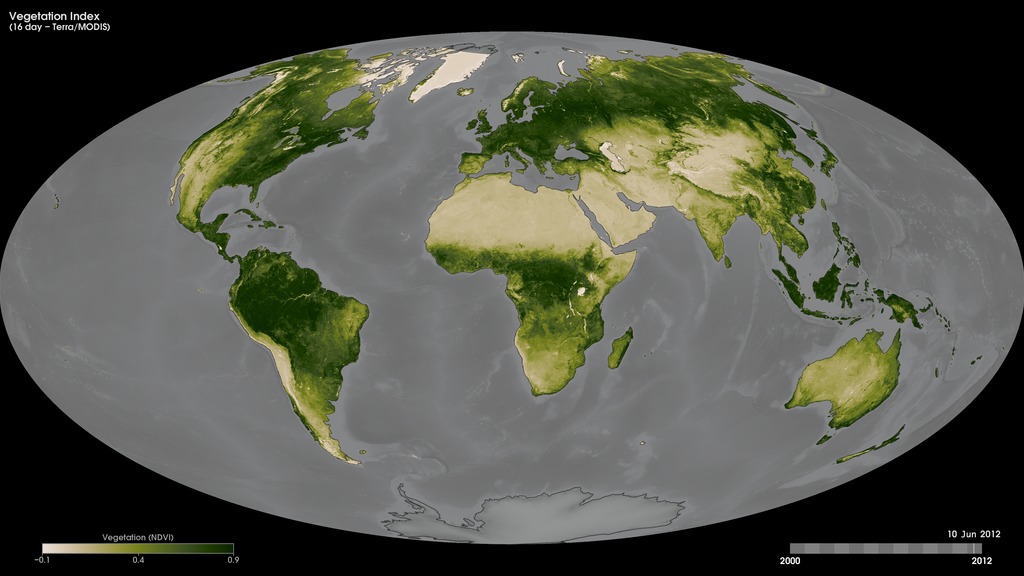Global Vegetation Index, Terra MODIS
One of the primary interests of NASA's Earth Sciences Program is to study the role of terrestrial vegetation in large-scale processes with the goal of understanding how our world functions as a system. These maps show Normalized Difference Vegetation Index (NDVI) values—a measure of the "greenness" of Earth's landscapes—from February 2000 to the present. The values, derived using data collected by the Moderate Resolution Imaging Spectroradiometer (MODIS) onboard NASA's Terra satellite, range from -0.1 to 0.9 and have no unit. Rather, they are index values in which higher values (0.4 to 0.9) show lands covered by green, leafy vegetation and lower values (0 to 0.4) show lands where there is little or no vegetation. Dark green areas show where there was a lot of green leaf growth; light greens show where there was some green leaf growth; and tan areas show little or no growth. Black means no data.
16-day Terra/MODIS vegetation index maps beginning February 2000.
Monthly Terra/MODIS vegetation index maps beginning February 2000.
For More Information
See the following sources:
Credits
Please give credit for this item to:
NASA's Goddard Space Flight Center
-
Visualizer
Release date
This page was originally published on Monday, December 2, 2019.
This page was last updated on Monday, February 3, 2025 at 12:50 AM EST.
Missions
This page is related to the following missions:Datasets used
-
NDVI [Terra: MODIS]
ID: 500
Note: While we identify the data sets used on this page, we do not store any further details, nor the data sets themselves on our site.


